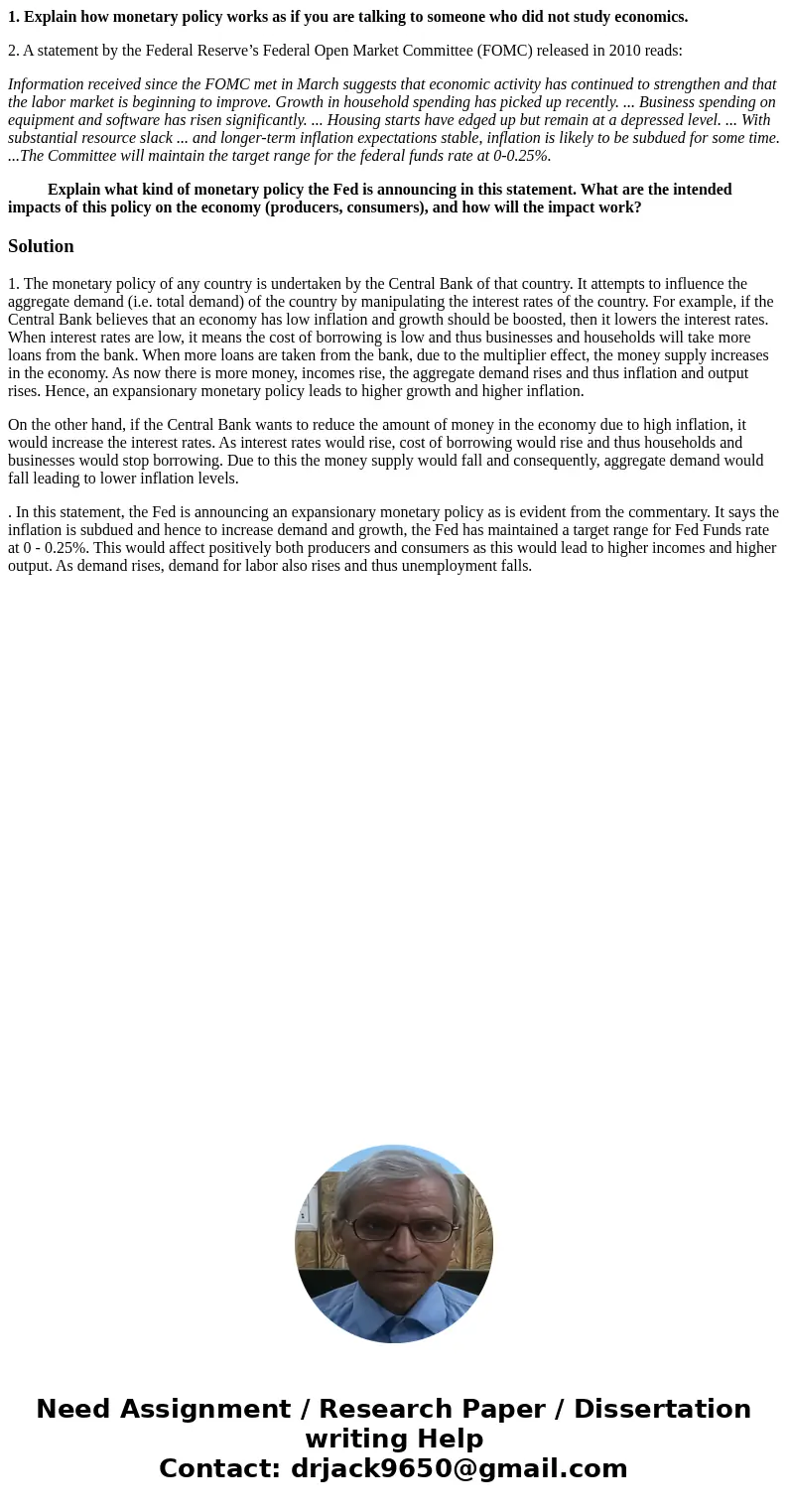1 Explain how monetary policy works as if you are talking to
1. Explain how monetary policy works as if you are talking to someone who did not study economics.
2. A statement by the Federal Reserve’s Federal Open Market Committee (FOMC) released in 2010 reads:
Information received since the FOMC met in March suggests that economic activity has continued to strengthen and that the labor market is beginning to improve. Growth in household spending has picked up recently. ... Business spending on equipment and software has risen significantly. ... Housing starts have edged up but remain at a depressed level. ... With substantial resource slack ... and longer-term inflation expectations stable, inflation is likely to be subdued for some time. ...The Committee will maintain the target range for the federal funds rate at 0-0.25%.
Explain what kind of monetary policy the Fed is announcing in this statement. What are the intended impacts of this policy on the economy (producers, consumers), and how will the impact work?
Solution
1. The monetary policy of any country is undertaken by the Central Bank of that country. It attempts to influence the aggregate demand (i.e. total demand) of the country by manipulating the interest rates of the country. For example, if the Central Bank believes that an economy has low inflation and growth should be boosted, then it lowers the interest rates. When interest rates are low, it means the cost of borrowing is low and thus businesses and households will take more loans from the bank. When more loans are taken from the bank, due to the multiplier effect, the money supply increases in the economy. As now there is more money, incomes rise, the aggregate demand rises and thus inflation and output rises. Hence, an expansionary monetary policy leads to higher growth and higher inflation.
On the other hand, if the Central Bank wants to reduce the amount of money in the economy due to high inflation, it would increase the interest rates. As interest rates would rise, cost of borrowing would rise and thus households and businesses would stop borrowing. Due to this the money supply would fall and consequently, aggregate demand would fall leading to lower inflation levels.
. In this statement, the Fed is announcing an expansionary monetary policy as is evident from the commentary. It says the inflation is subdued and hence to increase demand and growth, the Fed has maintained a target range for Fed Funds rate at 0 - 0.25%. This would affect positively both producers and consumers as this would lead to higher incomes and higher output. As demand rises, demand for labor also rises and thus unemployment falls.

 Homework Sourse
Homework Sourse